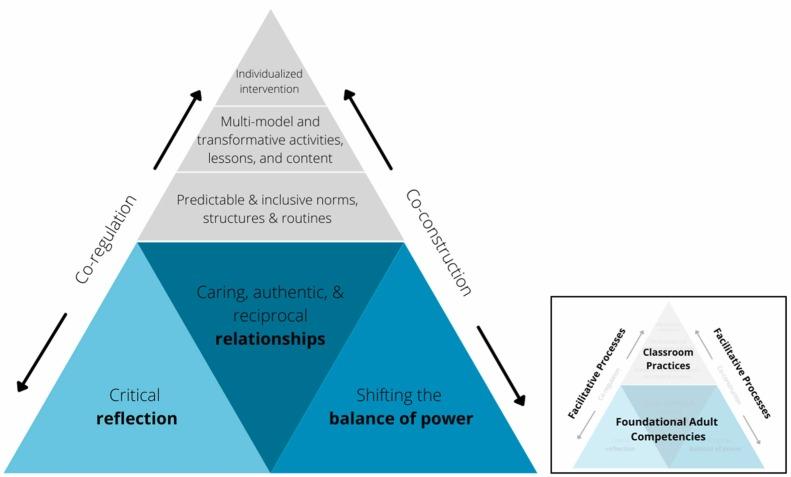Integrating SEL into the Digital Classroom: Proven Strategies for Engaged and Resilient Online Learners
Introduction: The importance of SEL in Online Learning
the rapid transition to digital classrooms has revolutionized education, creating new opportunities and challenges for educators and students alike. One critical component often overlooked in virtual learning environments is Social and Emotional Learning (SEL). Integrating SEL into the digital classroom is essential for building resilient, adaptive, and engaged online learners. In this article, we delve into the proven strategies for embedding SEL in remote learning, explore the key benefits, share practical tips, and provide real-life examples of triumphant SEL integration.
What is SEL and Why Does it Matter Online?
Social and Emotional Learning (SEL) refers to the process through which students develop crucial skills like self-awareness, self-management, social awareness, relationship building, and responsible decision-making. In the context of the digital classroom, these skills are more important than ever. Distance learning can often feel isolating, and students may struggle to stay motivated or connected to thier peers. Integrating SEL into online education addresses these challenges,nurturing a supportive learning environment and fostering resilience.
The Benefits of Integrating SEL into the Digital Classroom
- increased Student Engagement: SEL strategies promote active participation and collaboration, making virtual lessons more interactive.
- Greater Resilience: Students with strong SEL skills can better cope with stress, setbacks, and changes, which are common in digital learning.
- Enhanced Academic Performance: Studies show a positive correlation between SEL and student achievement, including higher grades and test scores.
- improved Digital Citizenship: SEL encourages respectful and responsible online behavior, reducing instances of cyberbullying.
- Better Emotional Regulation: Online learners with SEL support manage anxiety and frustration more effectively, leading to a healthier learning experience.
Proven Strategies for Integrating SEL into the Digital Classroom
Implementing SEL in virtual classrooms requires intentionality and creativity. Here are some proven strategies to weave SEL into your online teaching practise:
1. Start with Daily Check-Ins
-
use simple polls, emojis, or Google Form surveys at the start of each lesson to gauge students’ moods and emotional states.
-
Allow open-ended questions like, “How are you feeling today?” to foster a culture of openness and trust.
-
Dedicate time for students to share or reflect, either verbally or through chat.
2.Build Strong virtual Relationships
-
Schedule regular one-on-one virtual meetings or small group breakout sessions.
-
Incorporate icebreakers and team-building activities using collaborative tools, such as Padlet or Jamboard.
-
Celebrate milestones, birthdays, or achievements to foster a sense of belonging.
3. Incorporate social-Emotional Learning Activities
-
Use mindful moments or guided meditations at the beginning or end of class.
-
Integrate role-playing scenarios that address conflict resolution and empathy.
-
Encourage journaling or digital storytelling to help students process emotions.
4. Encourage Collaboration and Peer Support
-
Design group projects that require communication and shared problem-solving.
-
Create virtual peer mentoring or “buddy” systems.
-
Leverage discussion boards,wikis,or forums to create a space for community support.
5. Foster a Safe and Inclusive Virtual Environment
-
Establish clear guidelines for respectful online communication.
-
Address any instances of cyberbullying promptly.
-
Use diverse multimedia content and inclusive language to make all students feel valued.
6. Model SEL Competencies as an educator
-
Share your own emotions and coping strategies openly.
-
Exhibit empathy, active listening, and positive communication in all virtual interactions.
-
Respond to student challenges with patience and encouragement.
practical Tips for SEL Integration in Remote Learning
- Leverage Technology: Utilize available edtech tools and platforms—like Flipgrid, Seesaw, or Nearpod—that offer built-in SEL features and resources.
- set Consistent Routines: Predictable schedules help students feel secure and reduce anxiety, even in virtual settings.
- Provide Voice and Choice: Allow opportunities for student choice in assignments, projects, and class discussions.
- Integrate Reflective Practices: Incorporate end-of-week reflections, gratitude journals, or mood meters as regular classroom routines.
- Stay Flexible and Responsive: Adapt lessons and check-ins based on student feedback or observed needs.
Case Study: SEL Success in a Middle School Digital Classroom
Background: Erin, a 7th-grade teacher, faced a significant drop in engagement during the switch to remote learning. Students were disengaged and reported feeling isolated.
Strategy: Erin began each virtual class with an “emotion wheel” check-in, introduced weekly gratitude circles, and facilitated peer-group projects using collaborative platforms. She also organized virtual “lunch buddies” to replicate social interaction.
Results: Within a month, participation increased by 40%. Students reported a stronger sense of belonging, and classroom conflicts decreased. Academic outcomes improved, and absenteeism fell by half.
Takeaway: Even minor, consistent SEL practices can significantly impact engagement and student well-being in digital classrooms.
Firsthand Experience: Tips from Educators in the Digital Space
“Taking the time to check in emotionally with students wasn’t easy at first, but it paid off. Our online classes feel more like a community—they open up, collaborate, and are kinder to themselves and others.”
— Sophia, High School Teacher
“Mindfulness minutes before quizzes helped my anxious students relax and perform better. I could see a difference in attitudes and outcomes, even through a screen.”
— Jamal, 5th Grade Teacher
Recommended Resources for SEL in the Digital Classroom
- Collaborative for Academic, social, and Emotional Learning (CASEL)
- Greater Good in Education (UC Berkeley)
- Common Sense Education—SEL Digital Resources
- Edutopia: Social-Emotional Learning
Conclusion: Building Brighter, Stronger Digital Learners
Integrating SEL into the digital classroom is not a luxury—it’s a necessity. As educators, our mission is to forge strong, resilient, and engaged learners who can thrive regardless of the learning environment. By embedding social and emotional learning strategies into our virtual classrooms, we lay the foundation for academic success, well-being, and lifelong learning. Start small,stay consistent,and watch your online learners flourish—emotionally and academically.

